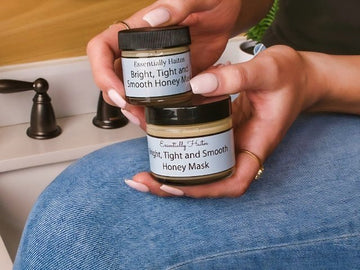Hi Beauties,
I wanted to get this post written yesterday, but my brain was fried, and I decided to get a pedicure and finish Breaking Bad after my day of giving facials (I know, I’m ~only~ 10 years late on all things Walter White). But at least today I have clean, pretty feet to go along with that empty feeling you get after finishing a great TV series.
Enough about that, today is all about exfoliation!
If you haven’t already heard me talk about exfoliation 100x on Instagram then you haven't been paying attention! 😁 It's a key step in your weekly skincare routine to achieve healthier, more radiant skin.
Exfoliation is the process of removing dead skin cells from the outer most layer of your skin. As we age, our natural skin cell turnover rate (the process of creating new skin cells to replace existing ones) and the shedding of the dead cells slows down.
As this slowing process happens, it results in more fine lines, wrinkles, sagging and dull skin (blah). It also can enable more acne causing bacteria to accumulate on the skins surface – resulting in visible blemishes.
This is where exfoliation comes into play – exfoliating is a way to manually help speed up the removal of dead skin cells, resulting in newer, fresher, and clearer skin that's visible on the surface. However, it is possible to over-exfoliate (been there, done that), which can cause more harm than good. Soooo, let me explain your options!
Physical Exfoliation
These are products that are granular or scrubby, that when applied to the skin, they physically buff or abrade the skin’s surface, thereby removing dead skin cell build-up. For instance, our Coffee Lovers Exfoliating Face Wash is a physical exfoliant.
- The key to physical exfoliants is to let the product do the work, do NOT apply heavy pressure with your hands, instead, gently massage the products in a small circular motion for best results.
- Physical exfoliants tend to leave your skin touchably soft (I know ours does) after just one use - but remember to not overdo it! 1-2 times a week is plenty!
Chemical Exfoliation
This includes the use of enzymes and acid-based products that have an exfoliating effect as they dissolve the protein bonds that exist between dead skin cells, allowing for dead skin cell removal.
- There are various chemical exfoliants, but well-known examples are enzymes, AHAs (alpha-hydroxy acids), BHAs (beta-hydroxy acids), and PHA’s (poly-hydroxy acids).
- When using enzymes and acid-based products you might feel a slight tingling sensation as your skin responds to the active ingredients.
- Chemical exfoliants come in different strengths for at home use vs professional use. An example of an at home chemical exfoliant is our B Bright Exfoliating Clay Mask which uses papain, a natural enzyme found in papaya (the mask also has jojoba beads as a gentle physical exfoliant). Our B Bright Mask suggested use is 1-2 times per week - max.
- As I mentioned, chemical exfoliants come in different strengths, which makes it even more crucial to understand the product you’re using. I always suggest consulting a skincare professional!
Mechanical Exfoliation
This involves the use of a machine or device to exfoliate. A common example of mechanical exfoliation is microdermabrasion, which typically involves the use of fine crystals and machine manipulation to resurface the skin (think sand-blasting and power-washing your face). This is a service offered by skincare professionals, like local estheticians. You definitely want a professional to handle this for you.
Next week, I'll go further into details about what exfoliation methods are good for what skin types/concerns. Please let us know if these posts are helpful. Talk soon!
Alicia 😊






